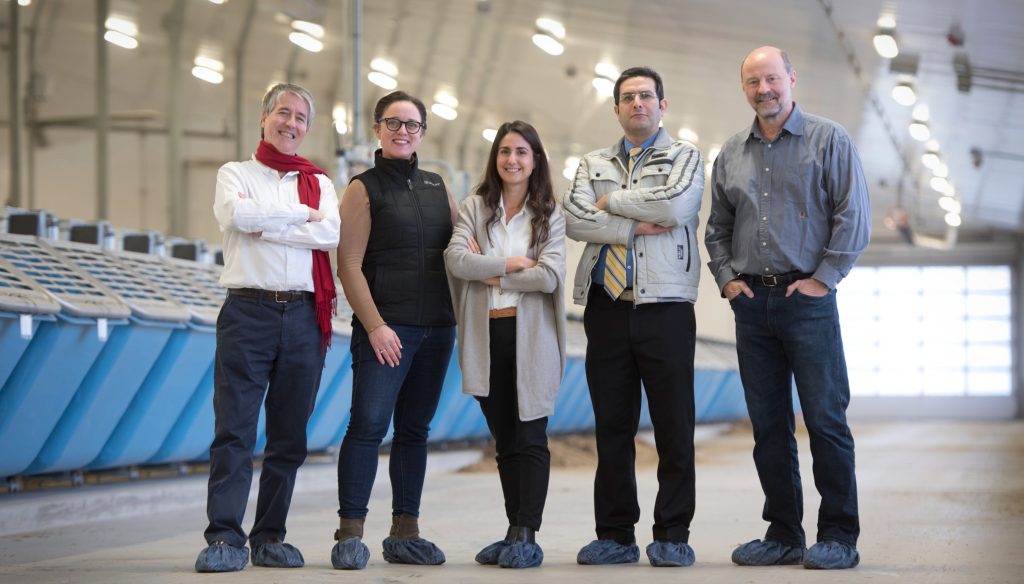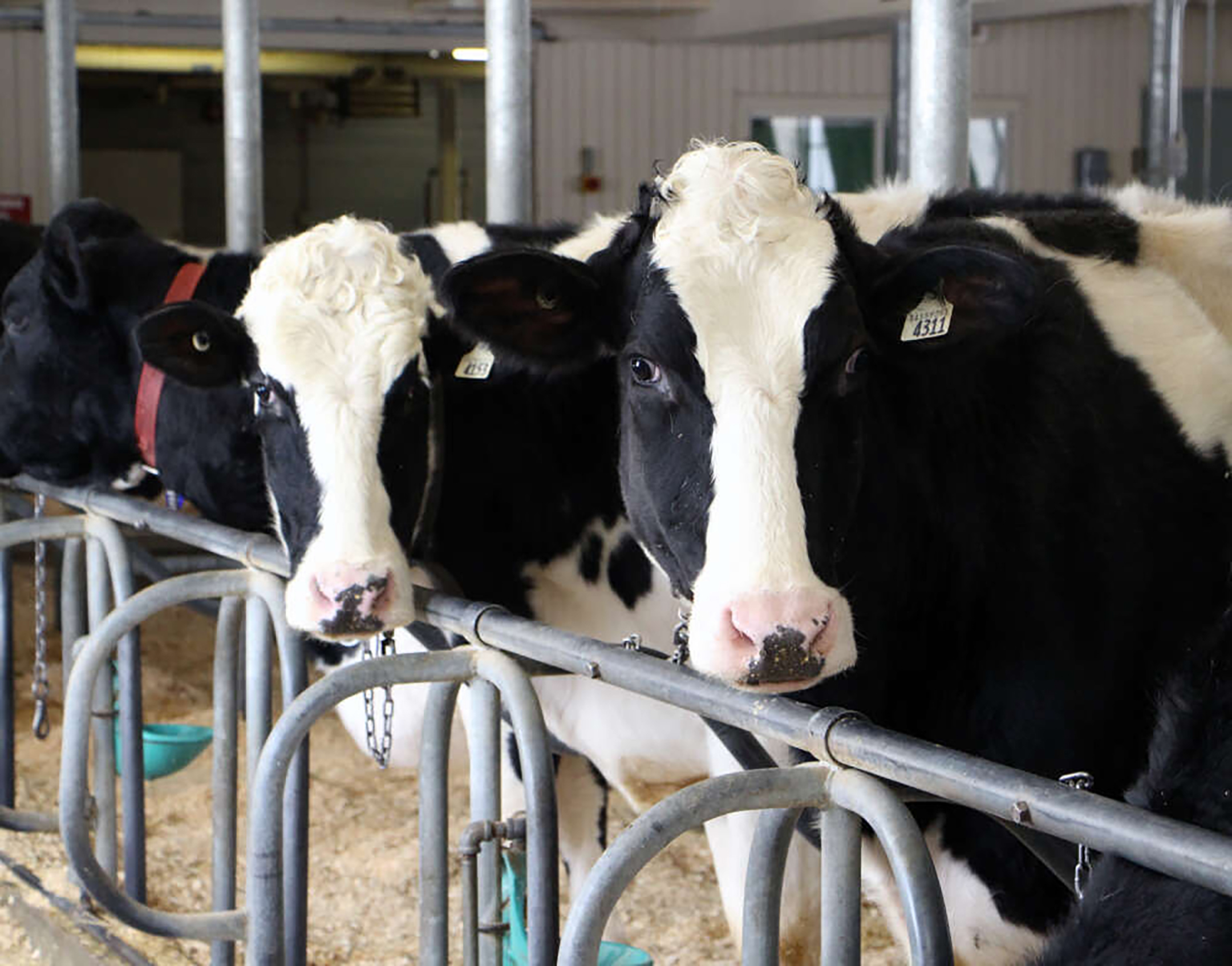WELLINGTON COUNTY – Last June, the University of Guelph (U of G) announced that dairy cows will be bred to burp less with research methods conducted at the Ontario Dairy Research Centre in Elora.
The team behind the research is now being recognized with the university’s Innovation of the Year Award for 2023.
The annual awards, from the Office of Research and the Research Innovation Office, recognize researchers for their creative strategies or products that make differences in the community and beyond.
“I always wanted to do applied research so that it is rapidly implemented with sizeable impact on the industry, society and environment,” said Dr. Filippo Miglior, senior advisor at Lactanet Canada.
He is leading and co-leading several large Genome Canada projects and is an adjunct professor at U of G in the animal biosciences department.
“It’s always good to be recognized… [and I’m] just so proud of it.”
The research
The minds behind the project are an international collaboration of researchers and industry partners, including: U of G researchers Dr. Christine Baes, Dr. Flavio Schenkel and Dr. Saeed Shadpour from the department of animal biosciences at the Ontario Agricultural College, as well as Dr. Miglior and Dr. Francesca Malchiodi from Semex.
Together, they developed a national genetic evaluation to identify dairy cattle with traits that enhance methane emission reduction.
Data was gathered on milk, feed intake, methane emissions, fertility and health in Holstein cattle and genomic information.
This enabled researchers to establish a reference population, measuring individual cows’ methane emissions and creating a data set for genetic selection.
Researchers used MIRS (mid-infrared spectroscopy) to measure the absorption of infrared light in milk samples from nearly 200 dairy cows to accurately predict these emissions.
Diet is one key factor in how much methane each cow produces, and in August, Baes told the Advertiser around 30 per cent of variation can be controlled with genetics.
The other 70% is based on factors such as the environment, and in response to climate change, the dairy industry aims to achieve a net-zero status by 2050.

From left: Dr. Filippo Miglior, Dr. Christine Baes, Dr. Francesca Malchiodi, Dr. Saeed Shadpour and Dr. Flavio Schenkel at the Ontario Dairy Research Centre in Elora. Submitted photo
Life Performance Index
“Anytime we launch a new evaluation for a novel trait in dairy cattle, we observe a favourable trend change of that particular trait,” said Miglior.
This is because there is more attention and visibility to the new trait, even if it’s not yet included in the LPI – a Lifetime Performance Index.
Favourable trends become more sizeable once the new trait is also included in the LPI or Pro$, an economic selection index that maximizes genetic response for cow lifetime profitability.
Methane efficiency has been available since April 2023, but it is not currently part of the LPI.
“We expect that it will be included by April 2025 in a modernized LPI and updated Pro$,” said Miglior.
Canada currently has an LPI of 67 traits farmers can choose from when picking cattle. These traits include how much milk, protein and fat the cow produces and if they are healthy and fertile.
“That’s the beauty of genetic selection,” said Miglior.
Currently, the methane trait is only being used in Holsteins, which make up about 95% of the dairy population in Canada.
Canada is also the first country to employ genetic selection for methane emissions and the strategy was laid out in 2012 through a collaboration between U of G researchers and Lactanet.
This involved collecting MIRS data from milk samples in registered herds in Canada. Lactanet has been storing this data for national genetic evaluations of dairy cows since.
“We are in a great position to exploit this technology because if we work on this data we collected in very rigid protocol, we have a good accuracy of the prediction,” said Miglior.
He added the lab used by officials is well homogenized, their system is accurate and they saw a good milk analysis.
“Positioning and investment of both government and industry in the research 10 years ago brought us where we are,” he said.
Once more data is collected through this research, the trait will be extended to other breeds such as Ayrshire and Jersey cows, the two next breeds of significance.
Genome project
Focussing on gathering methane emission and feed efficiency data for a standardized data base, the Efficient Dairy Genome Project (EDGP) was launched in 2015, led by Miglior and Dr. Paul Stothard from the University of Alberta.
The Resilient Dairy Genome Project (RDGP) then grew from the EDGP and began in 2019.
A new method was developed by U of G researchers as part of RDGP, which is used to establish roughly how much methane each of the approximately 700,000 registered dairy cows across Canadian farms produce.
A new project in this series has now been approved.
“The new genome project has been approved as a $16-million project, which kind of moves things to the next phase,” Miglior said.
The team will now aim to collect large-scale data on commercial farms in Canada, further developing the reference population.
For more information visit tinyurl.com/33ctfk3u. To read more about Lactanet and Pro$, visit lactanet.ca/en/pro-genetic-selection-index.




